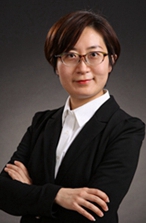The Updated Inventive Step Examination Criteria of the Compound

Sherry Zhang
Chemistry & Biotechnology Department
Patent Attorney
Hi, I’m patent attorney Sherry Zhang. Welcome to Linda Liu on air.
This time I’m going to talk about the Inventive Step of Compound stipulated in the revised Guidelines of patent examination.
For the examination criteria of inventive step of the claimed compound, this revision aims to highlight the guiding role of the three-step approach in this regard, and to further clarify the internal logical connection between the unexpected technical effects and the three-step approach.
“One-way street” situation which is similar to EPO practice is retained in this revision.
Next, I will explain this revision in detail based on five examples shown in the revision.
Example 1: The compounds in the closest prior art and the invention are the same in use but different in basic core structure. In this situation, there is no teaching in the prior art as a whole that would prompt the skilled person to modify the basic ring of the closest prior art, thereby arriving at the claimed compound with the unchanged use in the invention. Therefore the claimed compound involves an inventive step.
Example 2: The compounds in the closest prior art and the invention are similar in structure but different in use. In this situation, the skilled person in the art have no motivation to transform the compounds of the prior art into the compounds in the invention. Therefore the claimed compound involves an inventive step.
Example 3: The compounds in the closest prior art and the invention have similar structure and technical effect. They are both anti-diabetic drug.
Compared with the compounds in the prior art, the claimed compound provides another anti-diabetic drug in the technical field.
The structural difference between the compounds in the prior art and the invention is classical univalent isosteres, the skilled person in the art have the motivation to perform such isosteres replacement in order to obtain the same or equivalent anti-diabetic activity, therefore the claimed compound doesn’t involve an inventive step.
The Example 1-3 are the rewrite of the original Example 1-3 in the Guidelines, following the “three-steps approach”(Problem-solution approach)that was also often adopted by examiners.
Example 4: The difference between the claimed compound and compound in the prior art just lies in using different classical isosteres, but the cancer cell growth inhibitory activity achieved by the claimed compound is about 40 times higher than that of the compound in prior art. It means the claimed compound achieves unexpected technical effect when compared with compound in the prior art, therefore the claimed compound involves an inventive step.
Example 5: The claimed compound (b) in the invention is a general formula compound. The compound (a) in the closest prior art and the claimed compound (b) have similar structure and technical effect. Based on the analysis of example 3, the claimed compound (b) doesn’t involve an inventive step.
When amending the compound (b) to a specific compound (b1), the differences between the claimed compound (b1) and compound (a) are changed , and the anti-hepatitis B virus activity of compound (b1) is significantly better than compound (a).
There is no teaching of improving the anti-hepatitis B virus activity by modifying the structure of compound (a) in the prior art, therefore the claimed compound (b1) involves an inventive step.
From the Example 5 we can know that in the judgment of the inventive step of general formula compound and specific compound, changing their difference between the compound in the prior art may give rise to different examination conclusions on inventive step.
That is all for today’s topic. Hope you find it helpful. I’m Sherry Zhang. Feel free to contact me if you have any questions. As a leading IP law firm in China, we are always glad to help. Stay safe and healthy. See you next time.



